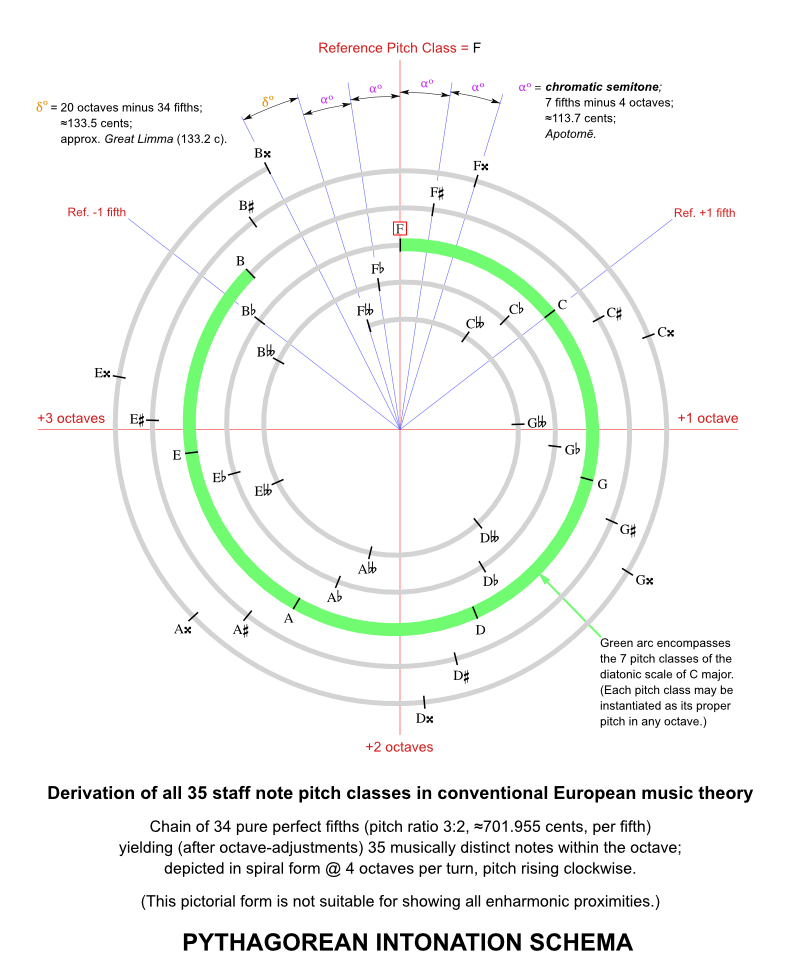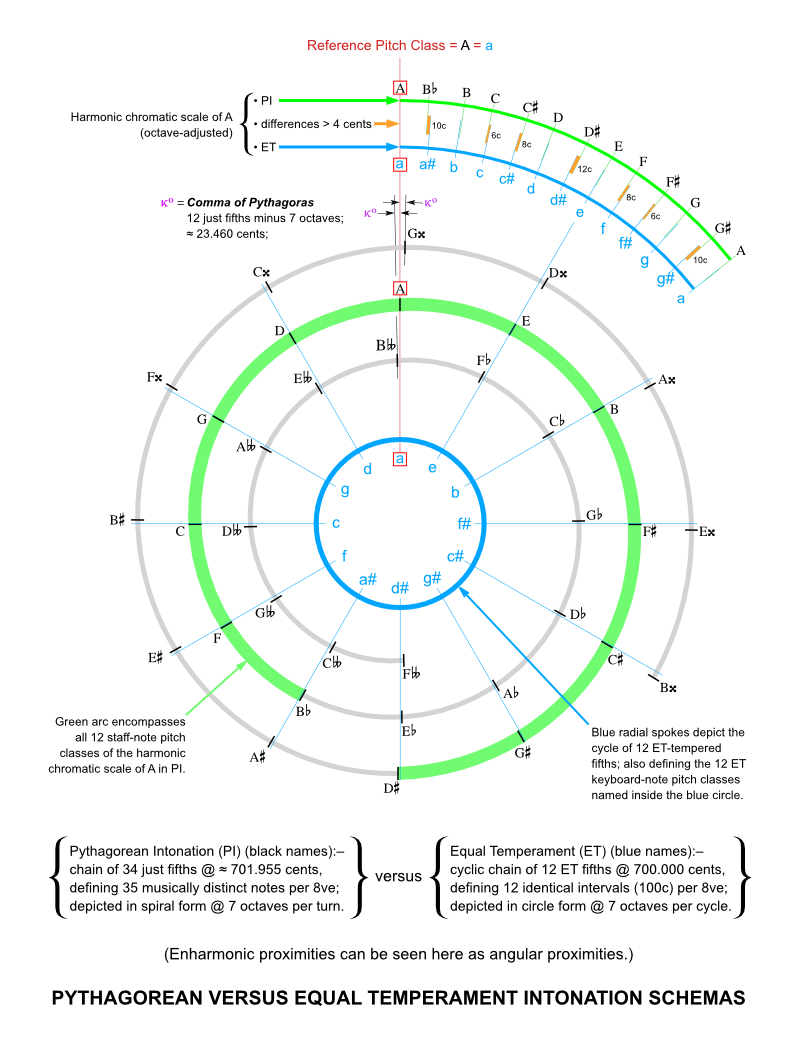Civilisation 3, thanks, but alas for now the brain-teaser I posted above will have to wait. When I finally get around to releasing my Situater orchestral intonation subsystem for Logic Pro, I suspect it may trigger quite a bit of debate on music theory. Hope you'll participate; especially if you're in a position to inform the debate about what schools are teaching what ideas on the topic.
Meanwhile I've attached here a couple of my diagrams I'll be using to help explain the basics of Situater:
• Derivation of all 35 staff note pitch classes in conventional European music theory - the Pythagorean Intonation Schema.
• Pythagorean versus Equal Temperament Intonation Schemas

